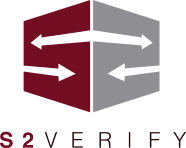A Guide for HR Leaders to Overcome Ageism In the Workplace
Ageism, a form of prejudice or discrimination based on age, is a pervasive issue in today’s workplaces that poses significant challenges, particularly in hiring and management practices. While ageism often targets older employees, it can also affect younger workers.
Cindy Shuler, a seasoned HR veteran who leads the consulting practice at IntegriStar, discusses these issues on this week’s episode of America Back to Work. She offers insights on how organizations can foster collaboration among different generations to create a more inclusive workplace.
Understanding Ageism and Its Effect On the Workplace
Ageism often manifests as stereotypes, biases, and discriminatory practices that affect hiring, promotions, and overall workplace dynamics.
Older employees, particularly those over 55, frequently face biases that question their technological capabilities, adaptability, or ability to keep up with younger colleagues. Conversely, younger employees may be perceived as inexperienced or needing more commitment.
Cindy explains, “Ageism is essentially a form of discrimination—a prejudice against a group of people. While it is commonly associated with older individuals, ageism can affect younger workers too. Especially since the pandemic, there’s a noticeable generational gap where older workers either want to reenter the workforce or switch jobs but are often nervous about being discounted because of their age.”
Recognizing the Signs of Ageism In the Workplace
Ageism can be subtle, often going unnoticed by those not directly affected. However, it significantly affects recruitment and retention efforts.
Signs of ageism may include biased language in job postings, limited opportunities for training and career development for older employees, and cultural cues that suggest older workers do not belong.
Cindy notes that to combat ageism, “Professional development and training in diversity and inclusion are imperative. Recruiters must be trained to avoid bias, and job descriptions should be thoroughly reviewed to ensure inclusivity. Moreover, companies must update their online presence to represent all age groups and appeal to every generation.”
Challenging Stereotypes Across Generations
One of the biggest obstacles to fostering an inclusive workplace is the prevalence of stereotypes that label each generation. While sometimes based on certain general truths, these stereotypes often do more harm than good. They oversimplify the diverse perspectives and skills that individuals bring to the workplace.
For instance, Baby Boomers (born 1946-1964) are often viewed as not tech-savvy or unwilling to embrace change.
However, Cindy points out, “The idea that Baby Boomers are not tech-savvy is one of the biggest misconceptions. Some Boomers may fear change, but employers must show empathy and offer the right support.”
Generation X (born 1965-1980), sometimes called the “forgotten generation,” is seen as self-reliant but somewhat cynical and risk-averse due to their experiences growing up during economic recessions.
Millennials (born 1981-1996) are labeled as job-hoppers with a sense of entitlement, yet they often seek meaningful work and career growth opportunities.
Cindy clarifies, “A lack of work ethic does not drive millennials; they are the most willing to act on better opportunities and look for workplaces that align with their values and purpose.”
Generation Z (born 1997-2012), currently entering the workforce, is sometimes characterized as having short attention spans or demanding high compensation.
However, Cindy emphasizes, “Gen Z wants meaningful and compelling work. They are entrepreneurial and value privacy but understand that success requires hard work.”
Creating a Culture of Generational Collaboration
For organizations to thrive, it is crucial to embrace a culture that values each generation’s unique contributions. This requires intentional efforts to bridge generational gaps and encourage collaboration, knowledge-sharing, and mentoring.
Cindy recommends a two-pronged approach, “First, focus on succession planning and knowledge transfer. Older generations have a wealth of institutional knowledge that needs to be documented and shared. Second, foster mentorship opportunities where older employees can guide younger colleagues, helping to break down stereotypes and build mutual respect.”
Encouraging Inclusivity and Understanding
To foster a truly inclusive environment, senior leaders must understand the importance of creating spaces where every generation feels valued and included. This means going beyond surface-level diversity initiatives and addressing deep-seated biases and misconceptions.
Cindy stresses the importance of education and action, “It’s not just about educating employees on generational differences; it’s about taking action. Each generation needs to understand what makes the others tick and adapt management and communication styles accordingly.”
The Role of Leadership in Promoting Generational Harmony
Leadership is vital in setting the tone for an inclusive and collaborative workplace. For senior leaders, especially those from older generations, embracing change, encouraging fresh ideas, and passing the baton to the younger workforce is crucial.
Cindy advises, “Senior leaders must understand that it’s time to pass the baton and be open to new ideas. By 2025, most of the job market will be millennials, and some are already leading us. Diverse perspectives lead to better outcomes, and it is time to leverage this diversity for the organization’s benefit.”
Looking to the Future: Embracing Generational Diversity
As organizations evolve, they must recognize that younger generations will increasingly dominate the workforce. Cindy emphasizes that understanding and embracing generational diversity is both a moral imperative and a strategic one.
“Diverse teams outperform homogeneous teams. The future workforce will be driven by millennials and Gen Z, who prioritize diversity, meaningful work, and social causes. Organizations must adapt to these shifts to remain competitive and foster a culture of innovation and inclusion,” Cindy concludes.







